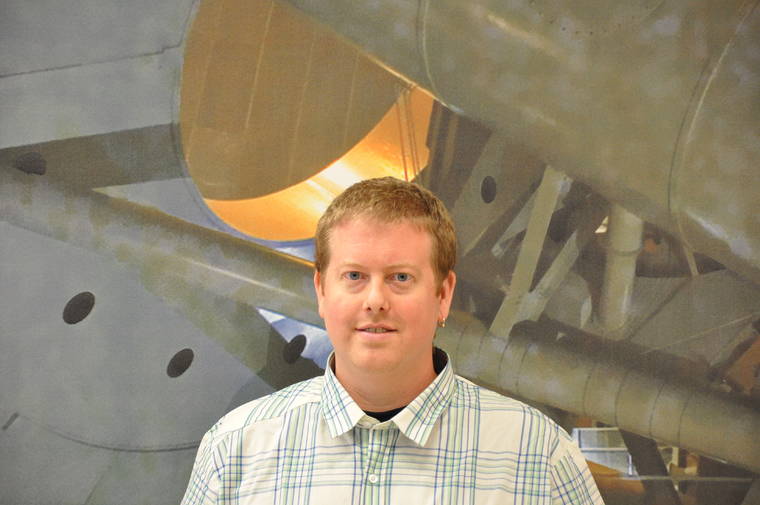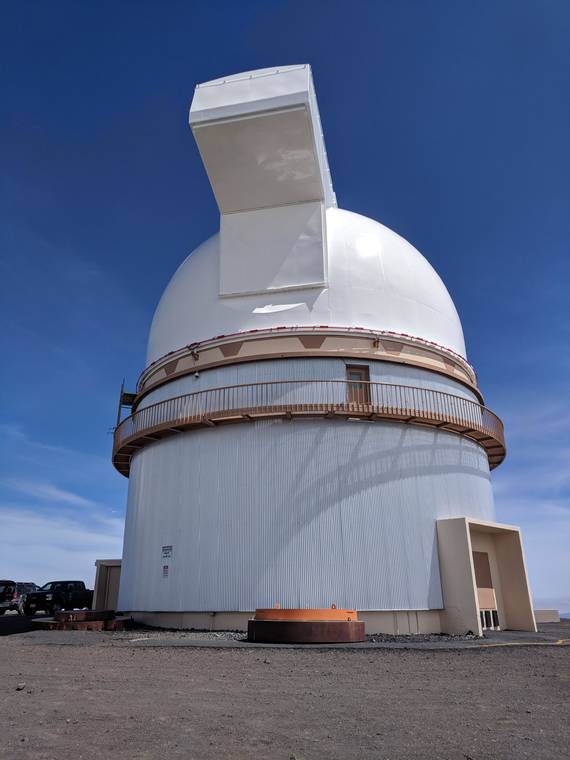The National Science Foundation awarded a $1.1 million grant to a University of Hawaii scientist to install an advanced secondary mirror onto the universitys 2.2-meter telescope.
The National Science Foundation awarded a $1.1 million grant to a University of Hawaii scientist to install an advanced secondary mirror onto the university’s 2.2-meter telescope.
UH astronomer and co-primary investigator Christoph Baranec said the mirror is expected to pass its preliminary design phase by the end of the year, and could be installed on the telescope by 2021.
The mirror, Baranec said, is capable of changing its shape, flexing by infinitesimal degrees in order to eliminate distortions caused by the atmosphere.
Actuators designed by Nederlandse Organisatie voor Toegepast Natuurwetenschappelijk Onderzoek (Netherlands Organization for Applied Science Research) allow the mirror to adapt its shape by tens of microns, Baranec said — about the width of a human hair.
“It’s a tiny amount, but that’s all we need to fix the atmospheric distortion,” Baranec said.
Adaptive optics such as this mirror are increasingly in demand for large telescopes, Baranec said. This particular model is particularly energy-efficient, requiring “about ten times less power” than similar adaptive mirrors, he said, which eliminates certain problems associated with adaptive optics, such as overheating.
The UH 2.2-meter telescope will be the first telescope on Maunakea to feature an adaptive secondary mirror.
“Other observatories around the world are very interested in this technology,” Baranec said. “We’re hoping we can pave the way for them.”
The new optics system will allow the 50-year-old telescope to deliver images comparable in resolution to those produced by the Hubble Space Telescope, according to UH-Manoa.
Email Michael Brestovansky at mbrestovansky@hawaiitribune-herald.com.

Subscribe today for unlimited access.
Already a subscriber?
Login
Not ready to subscribe?
Register for limited access.
If you have a print subscription but require digital access,
activate your account.









